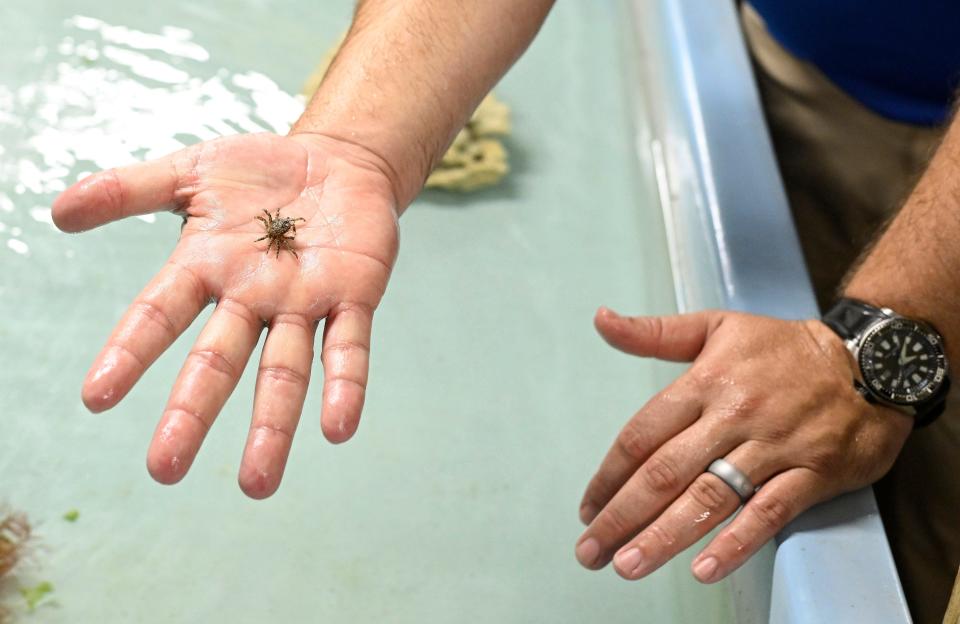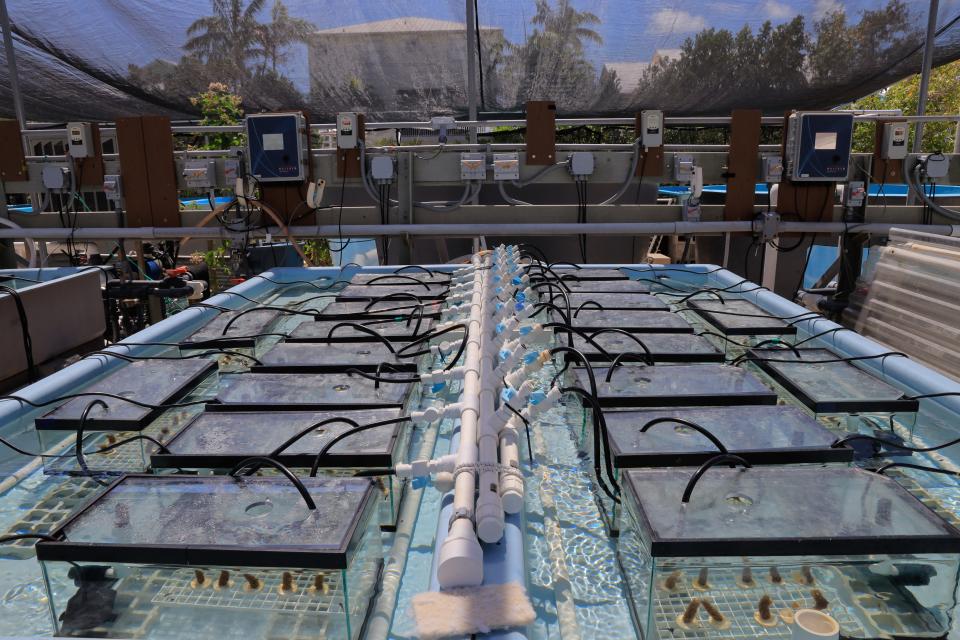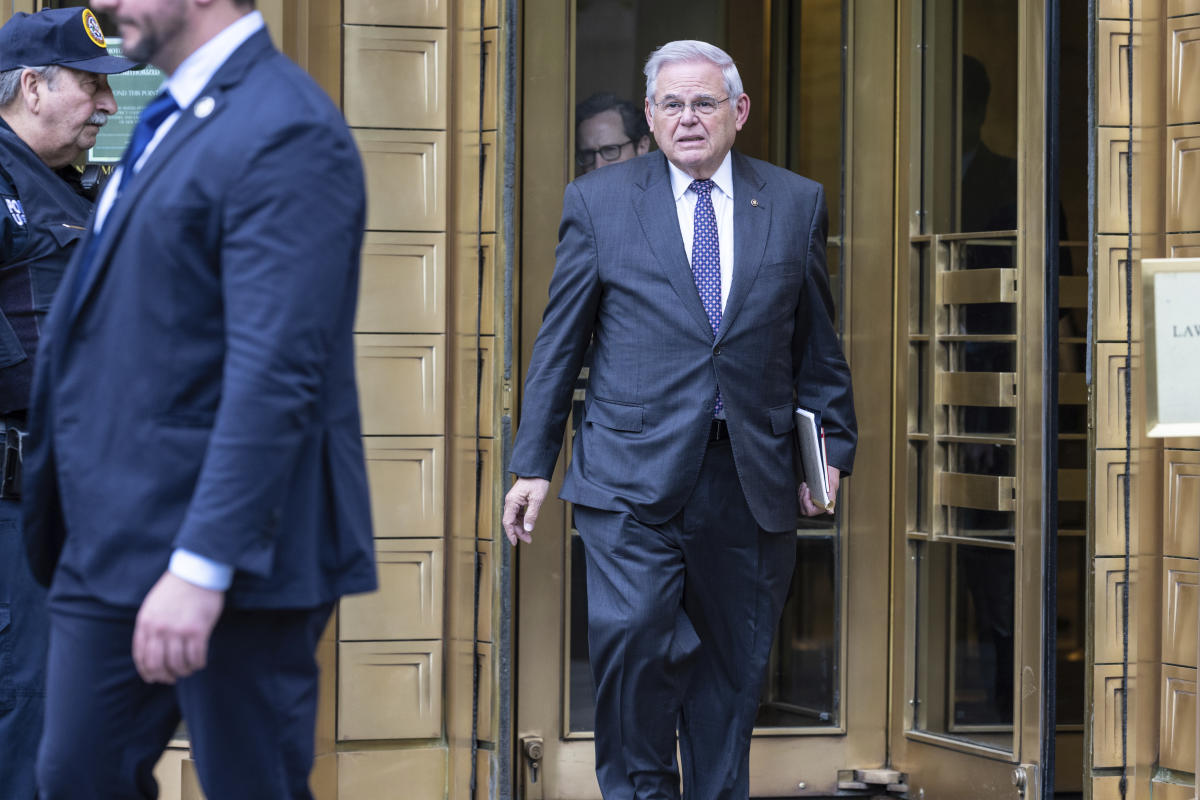More than $400,000 raised through sales of Protect Our Reefs specialty license plates was recently awarded in grants to help restore the Florida Reef Tract.
The plate – created in 2003 through legislation sponsored by the late Nancy Detert when she was in the state Senate – has raised more than $7 million for coral reef restoration and research.
While Mote administers the fund, which receives $25 from each tag, the money is awarded through a competitive grant process.
Where is the coral reef license plate grant money being spent?
“A unique component is the competitive grant program associated with this,” said Kevin Claridge, Mote’s vice president for sponsored research and coastal policy programs. “Any time you have that, you bring collaborators together.”
The goal is to help fuel the restoration of the Florida Reef Tract with heat and disease-resistant corals.
The funding has gone to 300 projects and 100 partners.
Here is a sampling of award recipients for this year.
Dr. Philip M. Gravinese and his students at Eckerd College are studying the effects of elevated temperature on the physiology of Caribbean king crab larvae.
The crabs, bred in a complex at Mote Aquaculture Park, are a key component of the National Oceanic and Atmospheric Administration’s $100 million plan to restore 3 million square feet of coral on seven iconic reefs in the Florida Reef Tract, dubbed Mission: Iconic Reefs.
Florida’s coral reefs valued at $8.5 billion

On an economic level, NOAA attributes the assessed value of Florida’s coral reefs at $8.5 billion, contributing to $4.4 billion in local sales, $2 billion in local income, and providing employment for 70,400 individuals in both full-time and part-time positions.
The introduction of crabs, which are exclusively herbivores, along with long-spined sea urchins are meant to control the growth of nuisance algae that compete with corals.
Dr. Kylie Smith, founder of I.CARE – Islamorada Conservation and Education Restoration – is studying sponge resistance and resilience during peak hyperthermal stress period.
Sponges are key to water filtration.
Dr. Matthew Gilg of the University of North Florida is exploring transgenerational environmental memory of thermal stress in brooding coral – specifically Porites astreoides, more commonly known as Mustard Hill Coral.

Gilg will conduct his research at Mote’s Elizabeth Moore International Center for Coral Reef Research & Restoration in Summerland Key, using the facility’s state-of-the art Climate and Acidification Ocean Simulator (CAOS).
Access to that technology, designed to test how climate change, including ocean acidification and warming temperatures impact corals, was a key element of Mote’s partnership agreement earlier this year with two aquariums in Taiwan and the philanthropic foundation of a leading Taiwanese electronics manufacturer.
Dr. James Locascio, a Mote-based scientist who has primarily studied sound related to fish courtship and spawning, will study the sound produced by coral reefs and the underwater community.
“Using sounds to look at the health of the coral reef is a novel idea that he’s leading,” Claridge said, adding it’s surprising to listen to the sound produced on several different reefs and determine why a “click” present on one reef is absent on another.
“They’re different components of the reef system,” Claridge said, calling the research recently funded as complementary pieces for the ultimate goal of reef restoration.
For information on the Protect our Reefs plate, visit https://mote.org/reef-plate.
This article originally appeared on Sarasota Herald-Tribune: Protect Our Reefs funds pay for key reef restoration projects
Signup bonus from




